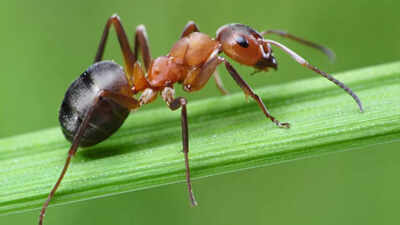In a discovery that sounds almost like science fiction, scientists have found that Queen ants of the Iberian Harvester Species (Messor IBERICUS) Can Produce OffSPRING NOT JUST OF A. GIR OWN KIND but From Annie Entrely different species. This rare phenomenon, called Xenoparous reproductionHas Never been observed before in the animal kingdom. Essentially, these Queens “Borrow” Sperm From Males of Another Species, Messor StructorTo produce hybrid worker ant that help run their colonies. In other words, these ants are cloning another species to ensure their colony survives. The Finding Challenges what we thinkt we knew about reproduction and evolution, revealing the hidden complexities of social incts.
How ants are breaking the rules of reproduction
Reproduction in the animal world is full of surprises, but the ability of one speech ‘females to produces offspring from a completely different species is extraordinary. Scientists Studied 390 Ants from five specials in the messor genus and discovered that worker ant in M. IBERICUS Colonies Were Genetically different from their Queens. Further Genetic Testing, Looking at Mitochondrial DNA, Confirmed That Whilens WHELEENS WERE M. IBERICUS, The Fathers of the Worker Ants were M. Structor. This means the Queens are effectively producing hybrid offspring, something never seen in ants before.The way these ant do it is truly fascinating. The Queen Ants Can Produce Male Offring in two forms: hairy males that are normal m. ibaryicus and bald males that are m. Structor. Both types carry the Queen’s Mitochondrial DNA, Showing that the Queens are the mothers. Scientists discovered that the Queens can remove their own genetic material from the egg and use stored sperm to create male. By Doing this, The Queens “Domesticate” The Genes of Another Species, Producing Hybrids That Serve as Worsers, even in areas where M. Structor Males aren Bollywood. It is a clever working that ensures the survival and growth of their colonies.
Hybrids Found Thousands of Kilometers Away
Even more surprising, Hybrid Worker Ants from Sicovered Over 1,000 Kilometers away from the closest Known Population of M. Structor. This shows that the Queens’ Unusual Reproductive Strategy is not just a local trick. It is a powerful adaptation that allows colonies to thrive in place where the other specials does not exist. It is like having a backup workforce ready no matter where the colony is located.
Questions that remain
Despite this remarkable discovery, many mysteries remain. For instance, can the M. Structor Males Produced by M. IBERICUS Queens Reproduction with their own speech? Are these male hybrids, clones, or something entrely new? Scientists are keen to explore these questions against the Findings Block Completely Reshape Our Understanding of Evolution, Social Behavior in Insects, and how SPECIES Adapt in Surprising Ways. This breakthrough sugges we may have only scratched the surface of nature’s hidden gentic experiences.



